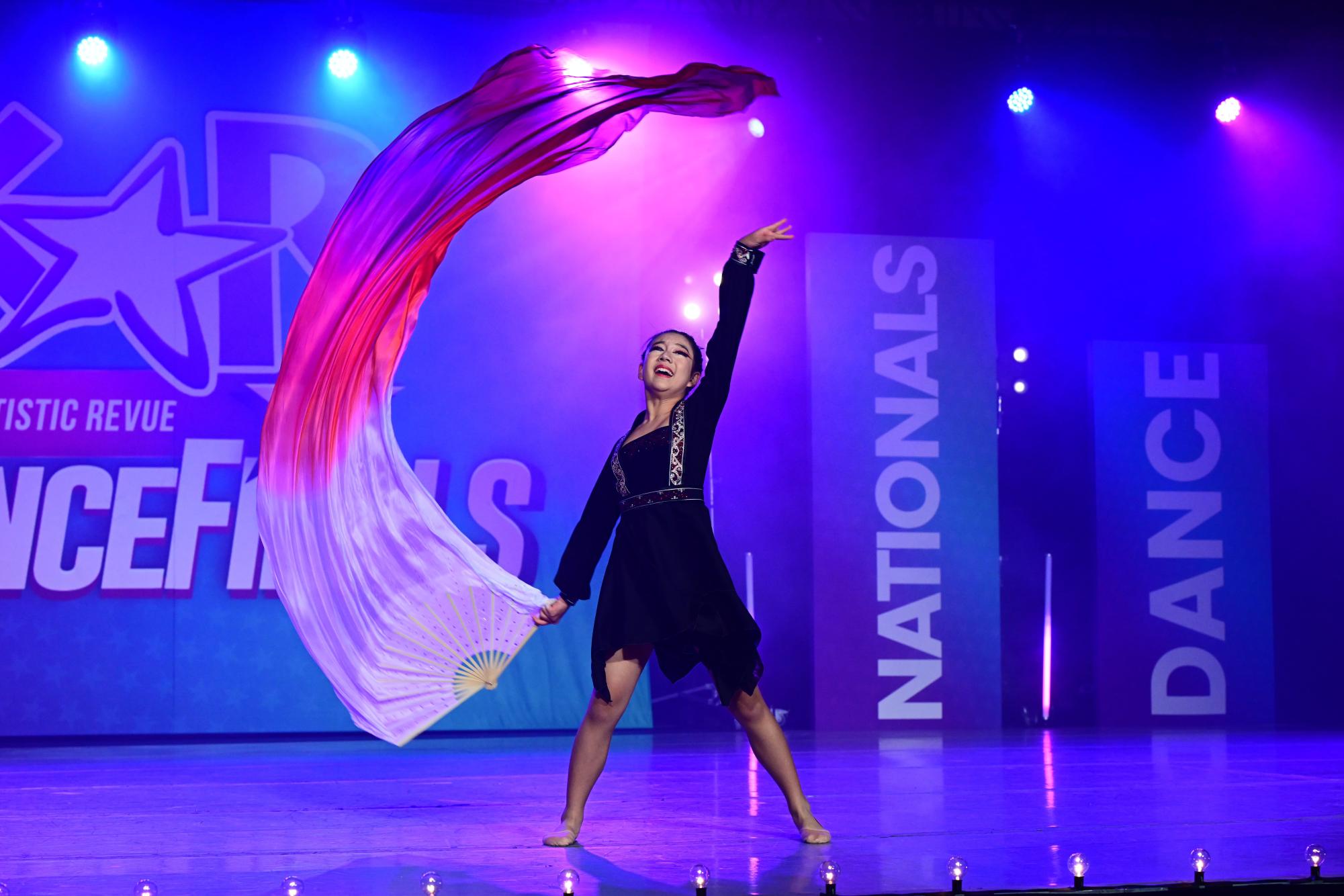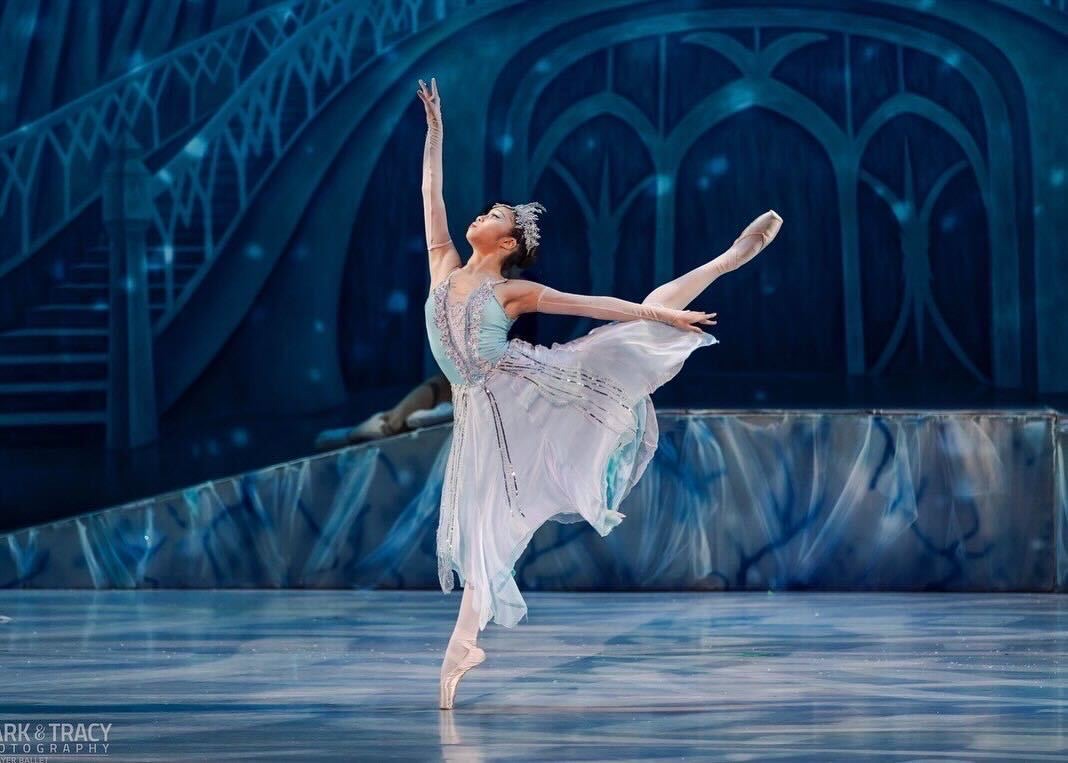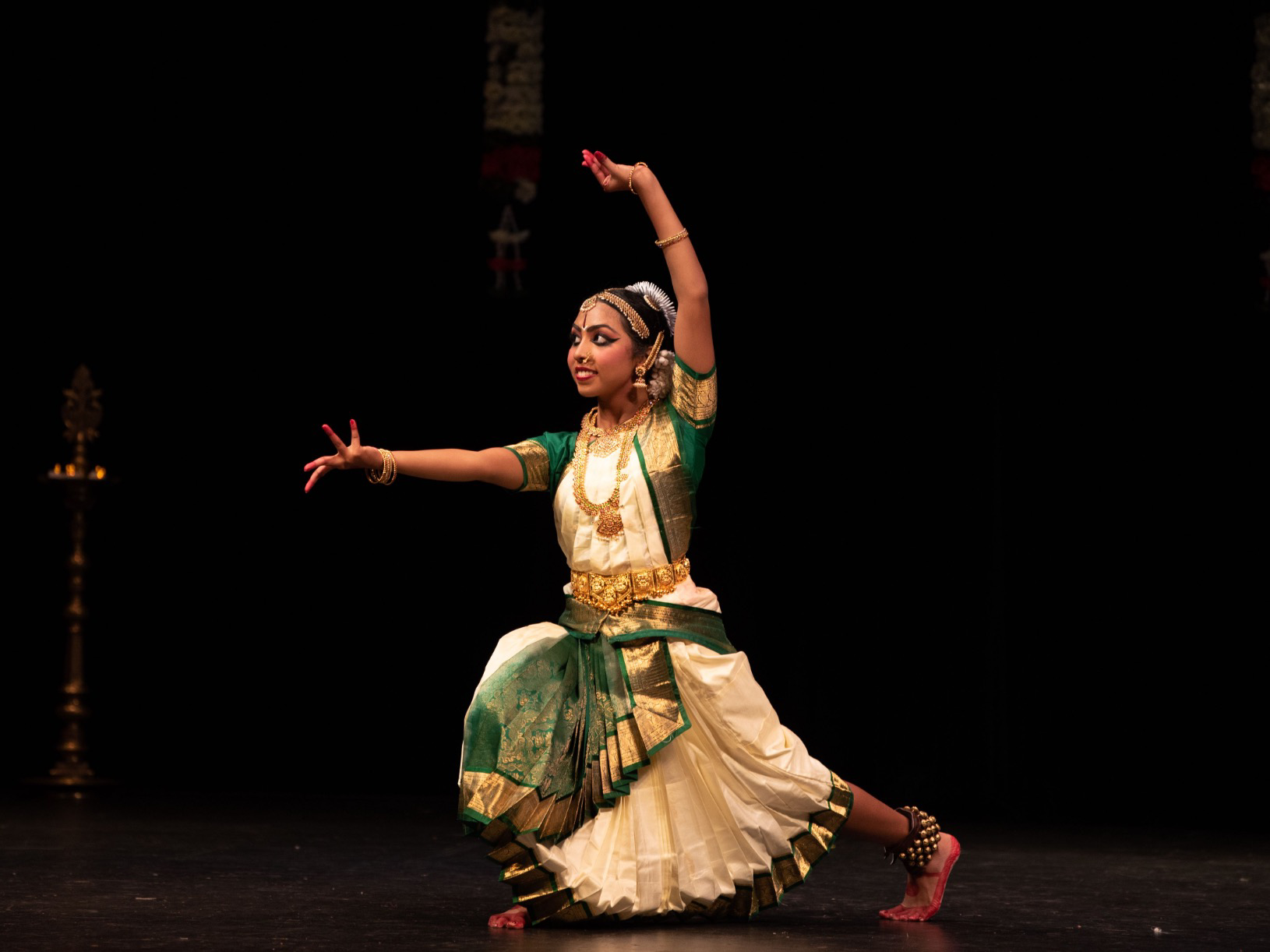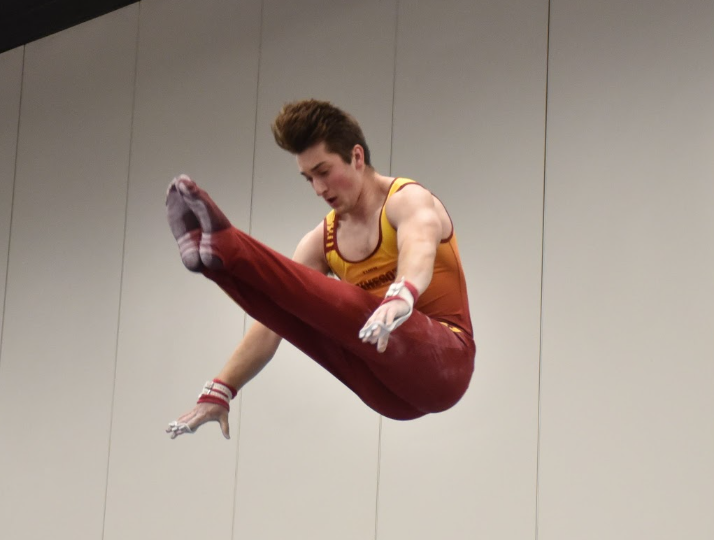Refusing to be ruled: Performers grow beyond restrictive body, beauty standards in their art


Long legs. Long arms. Being on the lean side, while still maintaining a good amount of strength.
For freshman Sara Su, who does contemporary and Chinese traditional dance at the Academy of Palo Alto Performing Arts, this physique always seemed ideal for a dancer. Her studio does not enforce these body standards as harshly as other studios, but Su has met dancers who have struggled to fit themselves into this image. Her dance teacher, for instance, attended a special dance school in China that required their students to remain very lean.
“They had to weigh themselves to make sure they were within a range that was acceptable,” she said. “If they wanted to go to a specialty dance college, they had to take different body measurements, and that was a big part of whether you could get in or not. I’ve heard about these standards all the time — people really struggling to fit into these standards and people who are malnourished because of it.”
Surrounded by younger dancers at her studio, Su has also felt these standards harm her self-esteem.
“I dance with a lot of younger girls, who haven’t really hit puberty yet and are really lean,” she said. “There was a period of time when standing next to them, there was a really big comparison. It was like everyone else on the team was super lean, and then there was me. It’s kind of hard to look at yourself like that, even though I was at a healthy weight for my age.”
Su believes these standards exist because of the emphasis on visual elements in dance: Audience members observe the dancers’ “lines,” critiquing the lightness or grace of their movements. There are trade-offs to creating a slimmer image to conform to these standards, which can damage dancers’ health.
“When you try to become skinnier, you eat less, and when you eat less, you don’t have enough energy — it’s kind of like a domino effect,” Su said.
“It’s affected me because, while looking more aesthetically pleasing, I don’t have enough energy for different techniques that I have to do on stage. And I don’t think that’s a worthy sacrifice.”
As she has furthered her dance training through the years, Su has come to realize that physique is not the sole distinguisher of a great dancer.
“I had to learn that looking visually pleasing doesn’t just mean that you have to be skinny,” she said. “It’s also about how you’re able to interpret the music, express your emotions and do your technique. All those things contribute to being visually pleasing — it’s not just about your body type.”

When former Gunn student sophomore Jaslyn Kwan walks into a dance studio, she can’t miss the abundant mirrors: They reflect her and other dancers’ silhouettes, helping them pinpoint misalignment and self-correct. However, they also produce distorted images, sometimes creating or exacerbating body-image issues.
Kwan started dancing at the age of 3 and has been doing ballet, ballroom and contemporary dance competitively for the past decade. Over the years, she has sometimes found it hard to avoid noticing her physical appearance as she dances.
“It’s sometimes hard to look at the mirror because there are mirrors that make you look way different than you (actually) do,” she said. “Instead, I think that it’s important to use those mirrors as a tool to help you correct yourself, rather than to stare at your body and try to think about how you could fix the way your body looks. It’s hard to keep that mindset, but it’s really important.”
Ballet dancers are encouraged to be mindful of their diet to uphold the traditions of the art and maintain peak condition. Kwan has met challenges maintaining this balance.
“As a kid, I would eat whatever I wanted and I would look the same everyday,” she said. “But as I got older, I noticed that it wasn’t like that anymore.”
Kwan recognizes that this trend has historical roots. In fact, her Russian-trained instructors’ experiences have impacted their approach to nutrition.
“When (my teachers) were in Russia, they were taught that you need to be skinnier,” she said. “But I think that (since they’ve) been in America for so long, they learned that it’s not respectable to say that.”
Despite the common misconception that a ballerina needs to be thin, Kwan notes that the industry, like her instructors, may be adapting its strict aesthetic standards to increase body inclusivity.
“It’s nice for ballerinas to have perfect hyperextending legs and beautiful arches,” she said. “But now, in this generation, I think it’s very clear that you can still have that gorgeous ballerina doing the same exact things without it.”
Effective nutrition has improved Kwan’s overall wellness and performance, including her stamina. Still, Kwan struggles with self-image occasionally, especially in an industry where the aesthetic details of physique are prioritized.
“I’m still in that journey of trying to make myself understand that (unconventional physiques are) okay, as long as I’m staying healthy,” she said. “I try to tell myself that even though I look in the mirror and I see this (or) that could be fixed, I try to look at the good things (such as) having a good soft port de bras (arm movements), and that’s really helped me get through it.”

Senior Oviya Rajan has been dancing Bharatanatyam with the Abhinaya Dance Company of San Jose for 12 years now. A classical Indian dance, Bharatanatyam originated in the state of Tamil Nadu in southern India, and has become a way for Rajan to express herself.
While her initial push to dance came from her mom, Rajan has appreciated the opportunity to connect with her Indian heritage and understand Indian mythology. With her passion, however, has come the
toll of a distorted body image, perpetuated by deeply rooted body and beauty standards in the Bharatanatyam dance community.
“Body-wise, I do think a lot of the dancers that are seen on stage are skinnier, and your teachers are constantly trying to make sure you’re staying fit,” Rajan said. “There’s also a stigma around height — if you’re taller, it’s harder to look ‘cleaner,’ and so they put a lot more pressure on you to not appear as lanky.”
Rajan recalled practicing a dance position called “Aramandi” that — like a plié — calls for dancers to bend low to the ground. Her taller teammates were forced to sit even lower to appear smaller.
“It’ll look like you’re not even in the position if you’re a taller dancer, whereas as a shorter person, it’s a lot easier to get away with it,” Rajan said.
Bharatanatyam costumes occasionally show the midriff, and Rajan has noticed how tops are tied to create a cinching effect, mimicking a corset. Bharatanatyam costuming has further perpetuated unhealthy body standards in an attempt to create the illusion of a larger bust: Rajan remembers performances for which makeup artists would advise her to pad underneath her blouse and drape.
“My mom thankfully vetoed that one,” she said. “There is always this pressure to not gain as much weight, so you look better. In the costume, you’re wearing four layers of clothing, so in the past when I’ve gained a little bit of weight, I’ve always looked in the mirror and thought to myself, ‘Now this piece fits weirdly here.’”
When Rajan works with makeup artists, she has noticed how they emphasize appearing paler on stage, using terms like “nicer,” “creamier” and “whiter.” When living in India from 2016-17, she noticed that this colorist ideal was intensified.
“In India especially, there’s always been a divide between darker and lighter skin, and when you’re more fair, people think it’s prettier to look at,” Rajan said.
As Rajan has continued her dance training, she has come to value her community as a support system.
“During harder performances, we all rely on each other and we all depend on each other for emotional support,” she said. “I’ve had rehearsals go to 12 a.m. or go for four or five hours. We’ve had to perform in really awful temperatures and heat, but we have each other’s backs, so it’s just a really good community.”

Hands smothered in chalk and exhaling a deep breath, Class of 2023 Gunn alumnus Aaron Novick stepped onto the competition floor, ready to showcase his skills to a roaring crowd. He jumped and gripped the pommel horse, legs straight and arms twisting rapidly, spinning and spinning — until he fell. Brushing it off, he continued to the rings, executing every step of the routine until he faltered again.
The weight of disappointment settled in — Novick had practiced for weeks on this routine and he had let his nerves disrupt his mentality.
“I remember feeling like a failure, and I started tearing up in my corral — like that just broke me,” Novick said.
With the support of teammates and coaches, though, Novick finished his events victoriously.
Inspired by the 2008 and 2012 men’s Olympic gymnastics teams, Novick has been training since he was 3, starting with Little Gym and gymnastic clubs in San Jose before moving to the Stanford Boys Club and now the GymACT Minnesota men’s gymnastics team.
With supportive teammates and coaches, many of the struggles Novick faced during his gymnastics journey came from his own anxieties. Looking in the mirror, Novick would often compare himself to his teammates.
“For me, the standard for male gymnastics is to be fit and to show that you have muscle definition and that you are strong — that kind of implies that you are a good athlete,” Novick said. “Back when I was younger, I did not fit that mold and that’s what I would work towards.”
Because of this pressure, Novick would often “cheat” — or cut his assigned exercise shorter — because did not believe he was as strong as teammates who were more toned than he was.
“I felt I was physically weak compared to all my teammates because they kept finishing strength before me,” Novick said. “That was something that affected me negatively mentally, because I felt like, ‘Oh, I’m not strong enough. Oh, I suck at strength. I’m not going to be as good enough as my teammates.’”
As he became stronger with training and began accepting his own physique, Novick shifted his focus from his body to his skills.
“I would get stronger, and that’s when I started to view my body in a more positive light because I did all this hard work to get where I am today,” Novick said. “I felt better about myself.”
Strength, flexibility and skill competitions in the gym helped him accept the physical differences among him and his teammates.
“Not everyone looks the same … I might have bigger triceps then someone but I might have smaller pecs, and everyone’s body is completely different,” he said. “That’s just who you are and you can’t control it.”
With these body standards and struggles, Novick often finds support in his coaches, who were former gymnasts.
“They don’t bully or try to beat us down or be negative in the gym,” he said. “They’re there to help us, and it’s something that I’m grateful for.”
Your donation will support the student journalists of Henry M. Gunn High School. Your contribution will allow us to purchase equipment and cover our annual website hosting costs.






